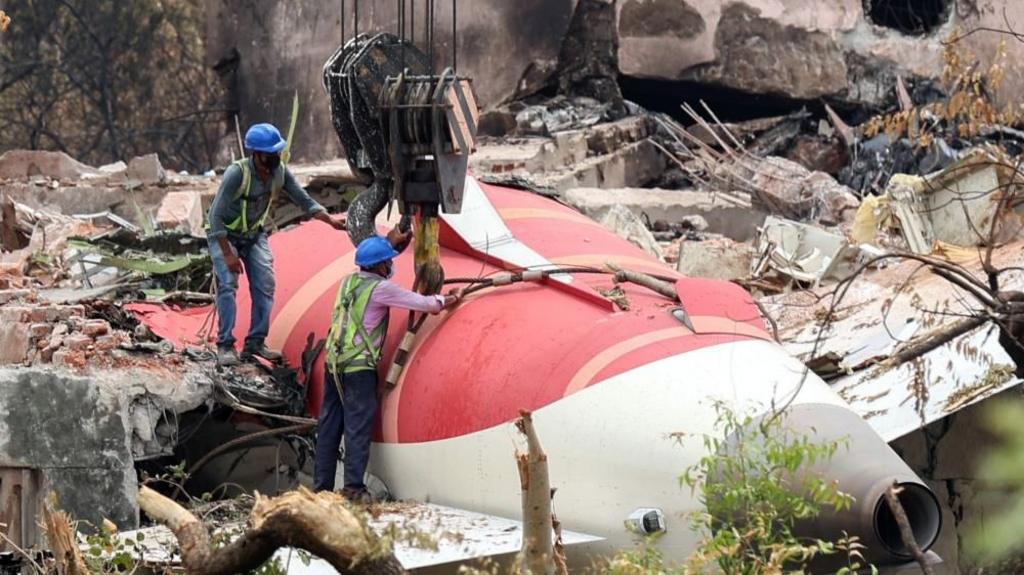Boeing 787’s Fuel Switches Now Under Scrutiny as Investigators Probe Pilot Actions
In a shocking revelation, a preliminary investigation into the deadly crash of Air India Flight 171 has found that fuel to both engines was cut off just seconds after takeoff. The accident, which occurred on June 12, 2025, resulted in over 270 fatalities, including passengers and people on the ground.
What Happened to Air India Flight 171?
The London-bound Boeing 787 crashed nearly 30 seconds after departing from Sardar Vallabhbhai Patel International Airport in Ahmedabad. According to the Aircraft Accident Investigation Bureau (AAIB) of India, data retrieved from the cockpit voice recorder and flight data recorder suggests that the aircraft’s fuel switches were manually turned off moments after takeoff.
“In the cockpit voice recording, one of the pilots is heard asking the other why he cut off the fuel,” the report stated. “The other pilot responded that he did not do so.”
Investigation Focuses on Fuel Control Switches
The fuel control switches, which are protected by mechanical locks to prevent accidental use, were turned off “one after another,” roughly one second apart. This led to an immediate loss of engine power, causing the aircraft to lose altitude before crossing the airport’s perimeter wall and crashing into a medical college’s dining hall.
Aviation safety expert Shawn Pruchnicki emphasized that the switches are designed to prevent accidental engagement. “You can’t just bump them — they need to be deliberately lifted and moved to the cutoff position,” he said.
Aquinas High School Mourns the Loss of Beloved Soccer Coach Sixto Gonzalez
Pilots Had Significant Experience
Air India confirmed that the flight’s captain, Sumeet Sabharwal, had logged over 15,000 flight hours, while First Officer Clive Kunder had 3,400 hours. This combined experience contradicts earlier estimates that placed the crew’s flight hours at around 10,000.
Mechanical Failure or Fuel Contamination Unlikely
Despite the catastrophic outcome, the report does not recommend any changes to Boeing or General Electric — the aircraft and engine manufacturers. This suggests that there were no immediate mechanical faults or design flaws. Laboratory tests on fuel samples from airport refueling stations also showed no signs of contamination, ruling out bad fuel as a cause.
Although a small amount of fuel was recovered from the wreckage, most of it was destroyed in the post-crash fire. Further analysis is ongoing.
Previous FAA Warning About Fuel Switches
The report references a 2018 bulletin from the U.S. Federal Aviation Administration (FAA), which had advised airlines to inspect fuel switches amid concerns that some were installed with disengaged locking mechanisms. However, the FAA did not consider it an unsafe condition at the time.
The switches on the doomed Air India aircraft were reportedly replaced by 2023, with no issues detected.
Impact on Air India’s Reputation
The crash has cast a shadow over Air India, which has been undergoing a modernization drive under the Tata Group after decades of state ownership. The airline’s last major crash was in 2020, when an Air India Express flight skidded off a runway in Kerala, killing 17 people. In 2010, another crash in Mangalore killed more than 150.
Conclusion: More Questions Than Answers
While the preliminary report offers crucial insights into the cause of the crash, it leaves many questions unanswered—especially about the pilots’ actions and whether the fuel cutoff was intentional or accidental. The final report may take months or even years, but for now, investigators are continuing to analyze evidence, including black box data, video footage, and mechanical inspections.
Air India has acknowledged the report but declined to comment further due to the ongoing investigation.

